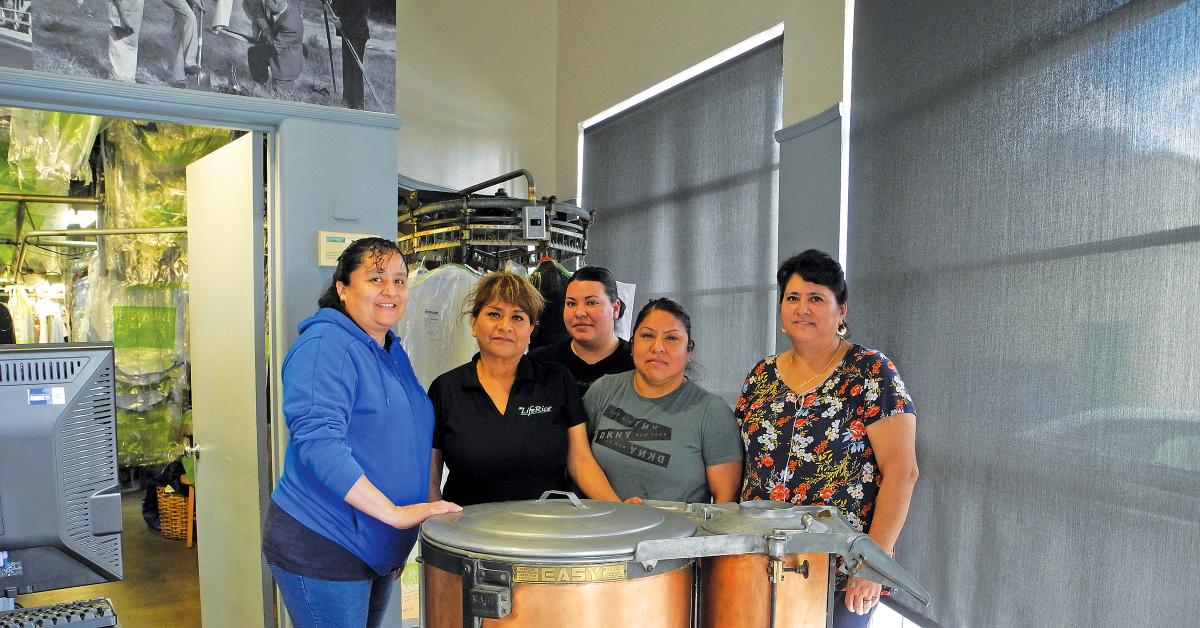CHICAGO — Smart Machines and Smart People go together in garment care operations today. Advanced technology walks forward hand-in-hand with a well-trained team, well-suited to handle the smartest of smart tech in your garment care world. Our two panelists, from Bryan’s Cleaners and Greene’s Cleaners, respectively, answer questions all about getting smarter today.
Hey, Smarty Pants! Think you know everything?
In today’s garment care world, that just might not be a boast. It might be the honest truth about your technology and your team working together at highest efficiency. That’s really, um, smart!
These operators share their experiences with melding new machines and technology with well-trained, great team members for best efficiencies. Hear this special Q&A-style panel talk all about smartness in their tech, smartness in their people, and the smarts to manage it all and do it well. Let’s get smart!
Our first panelist is Scott Bell, owner of Bryan’s Cleaners & Laundry, started in 1938 by Garnet Bryan in Pasadena, Calif. Bell says his company markets to busy professionals with large disposable incomes who enjoy the perks of having clothes picked up and delivered by route and valet.
Q: Can you tell us, generally speaking, how much smarter has machine technology become in cleaning operations today?
Bell: “It’s become a lot smarter. I can think back when there was a real dry spell in our industry. Technology left us from the 1950s to the 1980s. Now, in the front end, we’ve become computerized. We can all remember when there were Vis-A-Files and receipts to find the location of our customer’s clothes.
“Now all of that has disappeared and the front end has become very clean with computer screens and credit card machines. On the finishing side, we’ve almost completely disappeared with manual presses. Our plant was completely manual; now everything is hydraulic or pneumatic, and the only fatigue our employees experience is from the heat in the summer when they’re having to work hard on getting the linens finished.
“The third area that has really improved is in the cleaning department. When we had a cleaning machine back in the ’50s and ’60s, it required carbon filtration to keep the colors from bleeding into the solvent and exposing it into the next load of clothes. All that is completely gone now with filtration that uses paper cartridges and makes clean up much easier and quicker.”
Q: Along with modern technology, owners need the labor to run these smart machines. What’s that like right now, trying to match up new technology with the team members who have to run it?
Bell: “I think that’s something that has been a benefit to the drycleaning industry. With the advent of computers, it has really been an easier challenge because the people are forced into a routine on both the machinery side and the computer side. It has made it easier for training because the machines and the computer require the people to comply with a uniform and systematic way of doing things.”
Q: Can you share some of the challenges owners face training their team members on new machine tech?
Bell: “We have pre-training where they can sit and go through manuals and read it to begin with and know what they’re going to be exposed to. Once they get up there, they watch someone else do it and observe systems and routines. There are always personalized aspects to everything, things the employee will implement on his own. If they don’t follow the proper steps in running the machinery, it won’t respond to them and they won’t be able to perform their job.”
Q: Where has technology improved the most in today’s machines?
Bell: “The computerization and creation of the database. I remember when computers first came out, the talk was that everyone would be working a 30-hour workweek and there would be less hours in our workweek. That couldn’t have been more wrong, but I can see where they were coming from.
“Actually, what the result was, it brought technology that was only available to Fortune 500 companies all the way down to the mom and pop store. With the creation of databases, we all knew what services our customers are using. We could then, in turn, provide them with coupons for services they weren’t using. We’re able to track their clothes and their habits.”
Q: About efficiency, is it hard to find the right fit between an individual team member and the specific machine?
Bell: “I don’t think it’s any harder than it has ever been. It depends on the screening you’ve done in the interview process for the right person. You can find the right person but you still have to work to get them to buy into that machine.
“Part of it might have to do with how interested they are in getting a job and keeping that job. I don’t think that tech is so advanced that it left anybody behind. Tech is more mechanical and more buttons that no one can just walk up and intuitively know what to do and expect it to work. Dexterity is important but so is the process.”
Q: Can you share a memorable story about when a team member and their machine just clicked?
Bell: “I have an employee who was doing pants for me and I told him that I was going to change his system. I brought in a topper that was going to blow the pants at the top and then he was just going to have to leg them on the press. I brought the topper and the legger in. He went from 30 pants an hour to 50 pants an hour.
“This didn’t happen overnight, but by the time he was a couple of months into it, and for years after that, he could really put out the pants. I was really shocked. When you looked at him, you would not think he was working hard. He was one with the pants machine, one with the double legger.”
Q: Can you share a tip for how our readers can best combine smart, new technology with their smartly trained team?
Bell: “Getting them to buy in for the betterment of the team is key. To realize that efficiency makes their job easier and the result adds to increase in company profits and his or her bottom line.”
Q: Better tech along with a well-trained team improves efficiency, but what should an owner watch out for along the way?
Bell: “Tech today is a lot more reliable but it has turned into a double-edged sword. The machines we use now aren’t manual anymore. They have hydraulics, electronics, pneumatics, and if you can’t read a schematic for the electronic part of it and if you don’t have the tools for the pneumatic part of it, you’re not going to get it fixed.
“Even if I can troubleshoot a problem with the machine, it’s probably going to require a mechanic with the necessary tools and parts to get it up and running again.”
Q: Anything else you’d like to add about ‘Smart Machines, Smart People’?
Bell: “Be sure that you don’t rely on machine technology or machines in general to carry your company. You still need to have a great team member atmosphere in your building because that’s really what’s going to carry your business. A long-standing problem, obviously, is labor but in the end, what customers want and what’s really going to make your business outstanding is your staff and their approach to the business and everything else.
“While tech is important, I don’t think it is the end-all to make your company last a long time.”
Check back Thursday for the conclusion!
Have a question or comment? E-mail our editor Dave Davis at [email protected].


